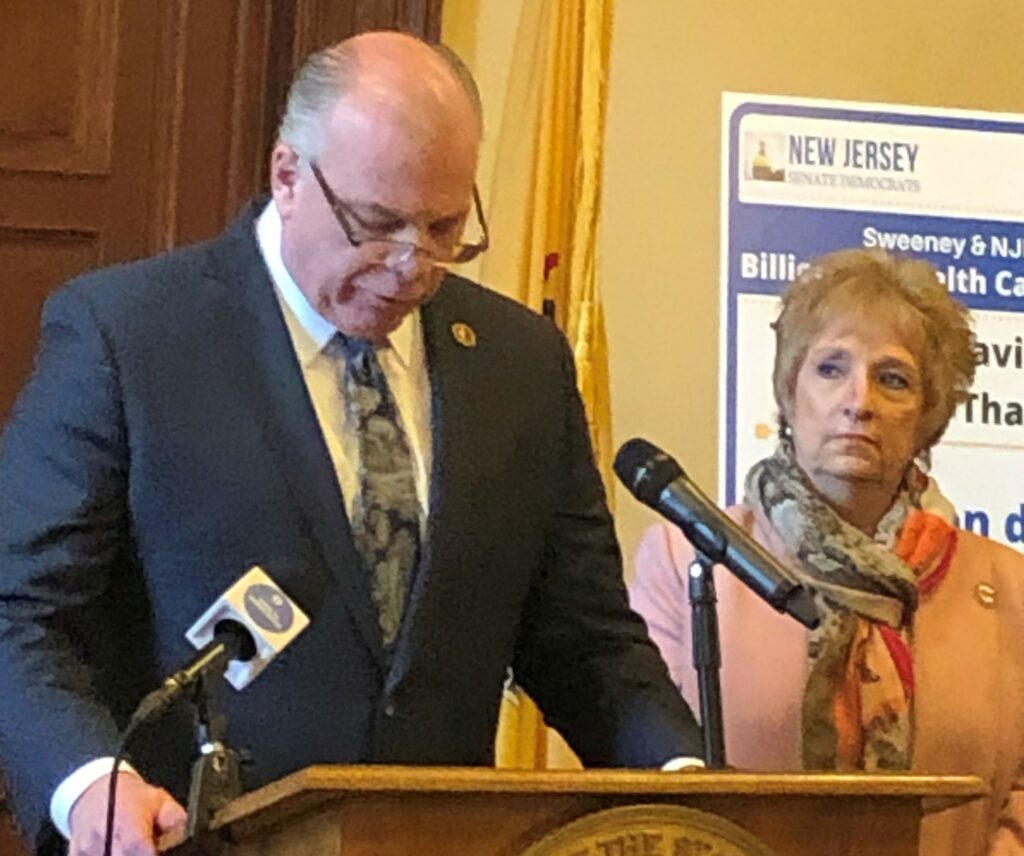Sweeney, Gopal, O’Scanlon Push Bipartisan Bill to Spur K-12 Regionalization, Countywide School Districts

Sweeney, Gopal, O’Scanlon Push Bipartisan Bill to Spur K-12 Regionalization, Countywide School Districts
Comprehensive reform bill includes financial incentives for Adjustment Aid districts with declining enrollment to pursue regionalization
Trenton – Senate President Steve Sweeney and Senators Vin Gopal and Declan O’Scanlon today said they are introducing ground-breaking legislation to encourage the creation of K-12 regional and countywide school districts in an effort to improve educational quality and efficiency.
The legislation establishes criteria for state-funded regionalization studies, increases flexibility on regionalization cost apportionment, bars any regionalization that would have a segregative effect, and provides significant financial incentives for districts losing state aid because of declining enrollment to regionalize by extending the schedule for their Adjustment Aid cuts from four years to eight years.
“This will be the first major overhaul of New Jersey’s school regionalization statute in over 25 years,” said Senator Sweeney (D-Gloucester/Salem/Cumberland). “It is designed to improve the quality of education by ensuring coordination of curriculum from K to 12, provide the enriched educational experience that smaller districts cannot offer, and generate long-term savings that can be used to hold down property taxes or reinvest in expanded educational programs.”
Salem County is currently exploring the possibility of creating New Jersey’s first countywide school district with a state-funded Local Efficiency Achievement Program (LEAP) grant, and both Pinelands Regional in Ocean and Burlington counties and Roosevelt in Monmouth County are using LEAP grants for K-12 regionalization studies. The new legislation provides for an expedited preliminary approval process to enable districts losing Adjustment Aid to readjust their 2021-2022 school budgets to factor in the increased state aid they would receive for participating in regionalization studies in the first year.
“Our legislation removes significant barriers to regionalization, including a statutory provision to recalculate state aid that would have made it more costly for some districts to regionalize than to remain separate,” said Senator Gopal (D-Monmouth). “Furthermore, it extends the timeline for Adjustment Aid cuts from four years to eight years for districts that regionalize. Most importantly, it is a voluntary process that provides local districts with greater flexibility to design a regionalization phase-in that makes sense for all.”
Senator Sweeney said the legislation incorporates recommendations made by various statewide educational organizations, by the Governor’s Shared Services czars Nic Platt and Jordan Glatt, by the Economic and Fiscal Policy Workgroup’s Education Task Force co-chaired by Rutgers Professor Ray Caprio and former Education Commissioner Lucille Davy, and by school board members, administrators, teachers, parents and local government officials he met with throughout the state.
“There's a growing local interest across New Jersey in consolidating small school districts to lower costs and property taxes while improving the quality of education for our children,” said Senator O'Scanlon (R-Monmouth). “Unfortunately, many districts that are interested in pursuing regionalization with their neighbors are finding the process extremely difficult under current state law. Our new bipartisan legislation simplifies the process and offers significant new financial incentives for those who study and implement school district regionalization.”
The legislation establishes an eight-year phaseout of Adjustment Aid cuts – stretched out from the current four years – for districts participating in a LEAP regionalization study that continues only if they move forward and implement a regionalization plan. Through 2028-2029, newly established countywide districts or K-12 districts would receive the greater of the state aid to which the newly established district would be entitled, or the sum of the aid of the consolidated districts including the eight-year Adjustment Aid phaseout.
Studies into the feasibility of establishing a countywide school district or a K-12 regional district incorporating any existing regional high school and its current sending districts would automatically receive preliminary approval for participation.
The legislation would permit regionalization studies to be undertaken without a formal vote by all sending districts to participate. In these cases, the regionalization study would include an option for the merger of just the officially participating districts and a second option for full regionalization that would also include sending districts not signing a participation letter that might choose to join the newly created regional district after seeing the study results. Only districts signing participation letters would be eligible for a reduction in their Adjustment Aid cuts.
“We believe all students would benefit from the curriculum coordination and enhanced learning opportunities that come from attending a K-12 or countywide district,” said Senator Sweeney. “But regionalization is particularly important for small districts with declining enrollments that are having an increasingly hard time providing a quality educational experience and making their budgets work.
“One-school districts with fewer than 500 students spend 17% more per pupil than the 60% of New Jersey districts with 1,000 or more students, and those include the large urban districts and comprehensive K-12 districts that are supposed to spend more under the state formula. Regionalization makes sense,” he said.





